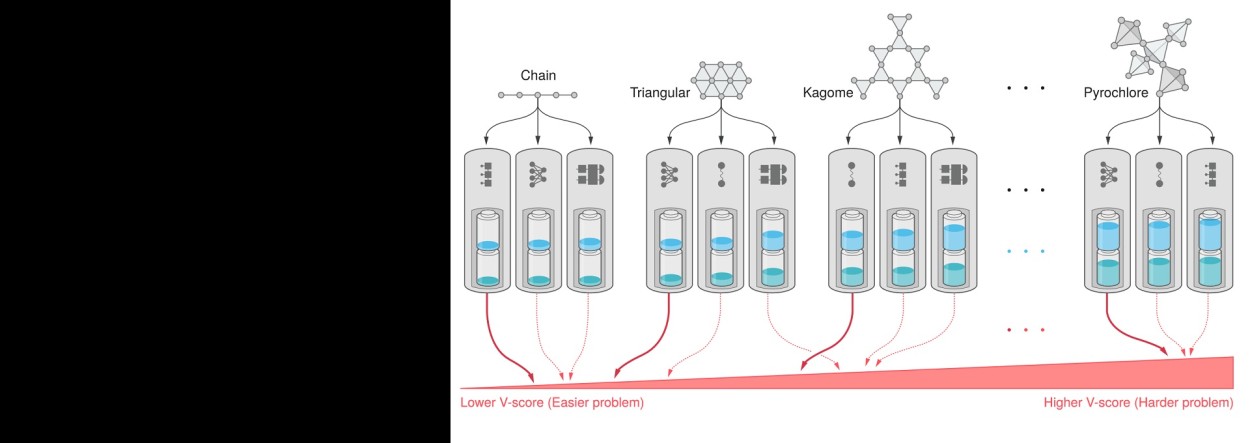A new way to assess the progress of simulation techniques in quantum physics
 V-score measures problem difficulty. Source : Dian Wu et al, Science, 386, 6719, 2024
V-score measures problem difficulty. Source : Dian Wu et al, Science, 386, 6719, 2024
Knowing the properties of materials is an essential challenge, both at fundamental and applied levels. These properties derive from the behavior of the elementary constituents of materials, in particular atoms and electrons. The rules governing the behaviour of individual particles have been known for almost a century, thanks to quantum physics, which has led to phenomenal progress in this field. However, many problems remain difficult to solve, particularly when it comes to considering the interaction of large numbers of particles with each other. This is what scientists call the “quantum many-body problem”, at the heart of the article just published in Science.
“For each particle added to the problem, all the mutual interactions with all the other particles must be taken into account in the calculation. This increases the complexity of the problem exponentially,” says CPHT researcher Filippo Vicentini. There are a multitude of such problems depending on the molecules and materials involved, including understanding superconductivity, where materials become perfectly conductive at low temperatures. To solve these problems - either exactly, or more often, approximately - researchers have developed numerous methods over the last few decades, such as tensor networks, quantum Monte Carlo simulations and dynamic mean-field theory. And new methods continue to be developed.
The Science article presents a quantitative criterion for measuring the precision of the methods and the difficulty of the problems. The scientists in the collaboration looked at model systems, which capture the main ingredients of complex phenomena, such as the Hubbard model, used for example in the study of superconductivity. The aim is to find the minimum energy state of these systems. The criterion created by the collaboration, called the V-score, is a combination of the value of this energy and the fluctuations around this value. “The closer we get to the exact solution, the smaller the fluctuations in the energy value. The V-score correlates with the precision error of the methods used”, explains Filippo Vicentini.
The collaboration has compiled a large number of results and methods to test and validate this criterion, and then to identify the most complex problems. Schematically, the more spatial dimensions the models possess, the more difficult the problem is at present. There are also so-called “frustrated” material, under the influence of magnetic interaction between atoms in particular, which are particularly challenging. “This collaborative work, with a shared database, will enable the community to have a clearer vision of the state of progress, without necessarily being specialists in each of the sub-fields involved,” hopes Filippo Vicentini. It would also be a way of guiding research into new techniques towards problems that are difficult to solve, where they could add value. This is particularly true of quantum algorithms, which are beginning to emerge, but which are not yet as effective as current methods for revealing the properties of materials.
*CPHT: a joint research unit CNRS, École Polytechnique, Institut Polytechnique de Paris, 91120 Palaiseau, France
Link to scientific publication: Variational benchmarks for quantum many-body problems, Science, 386, 6719, 2024. DOI: 10.1126/science.adg9774
Read the press release from EPFL, member of the collaboration.
 Support l'X
Support l'X